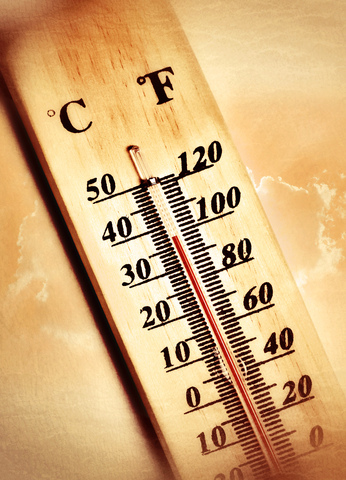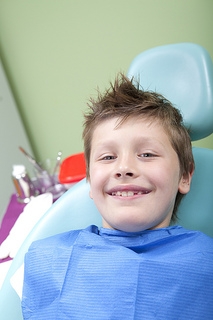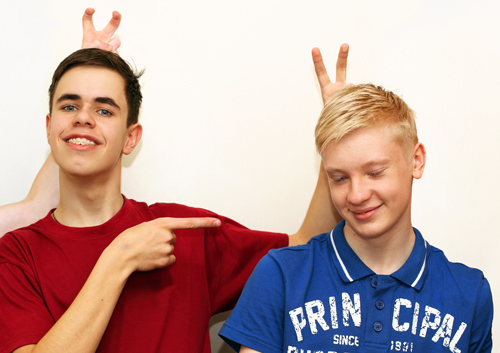June 1st, 2016

The dog days of summer are upon us, and with the temperatures soaring, our team at Tavarez Orthodontics wants you to be extra careful about sun safety when you’re out and about. Check out this incredibly helpful article on the Ten Summer Safety Tips for Kids, courtesy of Discovery.
Dr. Kathleen Tavarez and our team also encourage you to always have a bottle of water handy when heading out into the sun.
We hope you’re having a great summer! Let us know what you're up to below or on our Facebook page!
May 25th, 2016

If your teeth don't line up like they used to any more, you may be suffering from temporomandibular joint disorder, often called TMD. This is a term that can actually be applied to any condition that occurs because the temporomandibular joint (TMJ) is inflamed.
The temporomandibular joint is essentially the hinge that holds your lower jaw to your skull, and when it is inflamed or damaged in any way, it can be extremely painful. You have two temporomandibular joint, one on each side of your jaw, and it is typical to experience TMD in both sides at the same time.
Shifting of the Teeth
The reason that your teeth may not line up as they once did is that the ball and socket joints are often out of alignment and, as mentioned above, often very inflamed as a result. In order to correct the problem, Dr. Kathleen Tavarez may prescribe dental orthotics such as a lower jaw splint.
Sometimes, the wisdom teeth can play a role in the shifting of the teeth as well. If shifting wisdom teeth is combined with TMD, it may be necessary to have your wisdom teeth removed. Dental splints may follow if your teeth don't shift back to their proper positions on their own.
TMD is certainly a difficult thing to deal with, so if you experience your teeth shifting, scheduling an appointment at our Menlo Park or San Carlos, CA office is the smartest course. We want to help you get your smile back, so give us a call anytime.
May 18th, 2016

Many developing orthodontic problems can be intercepted and corrected if diagnosed and treated at an early age. Dr. Kathleen Tavarez and our team at Tavarez Orthodontics recommend children have their first orthodontic evaluation no later than age seven, or younger if the front four permanent teeth have replaced the baby teeth. Early treatment, also known as interceptive treatment or Phase I treatment, provides both timely detection of problems and greater opportunity for more effective treatment. Early intervention guides growth and development, preventing serious problems later.
If your child is showing these signs, it may be time to think about early orthodontic treatment:
- Early or late loss of baby teeth (your child should typically start losing teeth around age five or six, and will have all their permanent teeth in around age 12 to 13)
- Difficulty chewing and/or biting
- Mouth breathing
- Sucking his or her thumb
- Speech impediment
- Protruding teeth (the top teeth and the bottom teeth extend away from each other)
- Crowded front teeth
- Teeth that don't come together in a normal manner or even at all
Early intervention will greatly reduce the severity of your child’s case, and therefore reduce the length of treatment time and cost for a second phase of treatment when all of his or her permanent teeth have erupted. An evaluation at our Menlo Park or San Carlos, CA office will determine if your child’s dental and skeletal growth is proceeding properly or if interceptive treatment is needed. Many times, a more severe problem can be corrected using sophisticated removable appliances instead of traditional orthodontic treatment.
To schedule a consultation for your child to visit with Dr. Kathleen Tavarez, please give us a call! We will provide your child with an initial exam, and discuss with you the best steps to take toward caring for your child's smile.
May 11th, 2016

Brace-ism: believe it or not, it’s a concept. The Urban Dictionary defines brace-ism as “acting mean to people who have braces on their teeth.” Phrases like metal mouth, brace face, and train tracks are common jokes uttered by gap-toothed fools who like to make fun of people with braces.
While ignoring these comments and taking the high road is the best thing to do, there’s nothing wrong with having a few clever retorts and quick-witted comebacks up your sleeve.
- The next time someone calls you train tracks, break into an obnoxious train imitation, with lots of toot-toot and chuga-chuga-chuga. Finish off your crazy locomotive impersonation with some sort of deafening train horn. That’ll keep the bullies at bay.
- “It’s better to be a brace face than a space case.”
- Counter with a ridiculously childish joke that makes the schoolyard tormentor feel even smaller than he already is. “Oh. Yeah. Why did the deer need braces? Because he had buck teeth. Hahaha.” Top it off with an exaggerated eye roll.
- “Yeah, my brother tells that joke. He’s six. You guys should hang out.” That’ll stop the haters dead in their tracks. Or would that be train tracks?
- Here’s one from the sarcasm grab bag. “Well, I’m just glad there’s a way to fix what’s wrong with my face.”
- “I can’t wait to discuss this formative moment at our ten-year class reunion, when my teeth are razor-straight and you’re wearing adult braces.”











 Website Powered by Sesame 24-7™
Website Powered by Sesame 24-7™